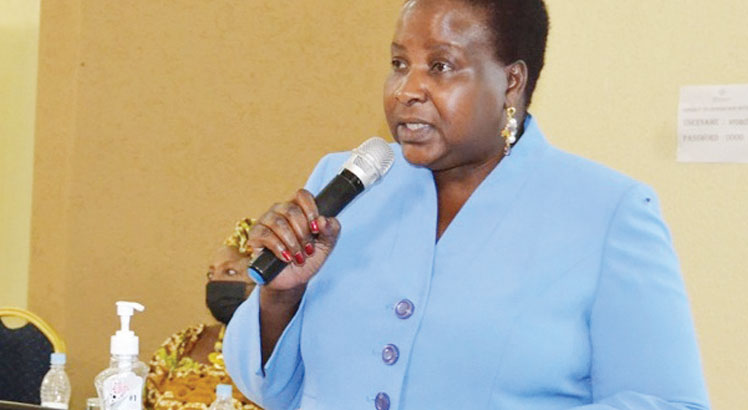HIV infections drop by 66%
Malawi continues to make tangible progress in the fight against HIV and Aids as statistics from Ministry of Health show a 66 percent drop in HIV-related deaths and infections over 10 years.
Statistics Minister of Health Khumbize Kandodo Chiponda presented at the Joint Annual Review of the National Response to HIV and Aids in Lilongwe yesterday, indicate that HIV-related deaths have dropped from 32 000 in 2010 to 10 800 in 2021, representing a 66 percent drop.
The statistics also show that there were 56 000 HIV infections in 2010 that have reduced to 19 000 in 2021, again representing 66 percent reduction.

But Chiponda said an estimated 1.4 million people have succumbed to HIV and Aids-related complications since the 1980s when the first case was diagnosed in the country.
She said: “By June 2021, a total of 955 435 people living with HIV knew their HIV positive status while 878 232 people were on the life-prolonging anti-retroviral medicines [ARVs], of which 825 538 had their viral load suppressed.
“This progress represents 97-92-94 with respect to the 95-95-95 treatment targets.”
The 95-95-95 targets stipulated that by 2020, 95 percent of all people living with HIV should know their status, 95 percent of all people diagnosed with HIV infections should receive sustained ART and 95 percent of all people receiving ART will have viral suppression.
The minister attributed the decline in both the HIV-related deaths and infections to collective efforts by government and its partners through support in different initiatives implemented to curb the epidemic.
The initiatives include the introduction and scaling up of free ARVs and anti-retroviral therapy (ART) as well as enactment of the HIV and Aids (Prevention and Management) Act of 2018 that has created a legal environment to prevent and manage HIV and Aids.
Malawi also launched the 2020-25 National Strategic Plan for HIV and Aids to ensure that all necessary HIV and Aids control measures are implemented to reduce the HIV and Aids impact and eliminate it as a public health threat by 2030 in line with the 2016 United Nations General Assembly Political Declaration on HIV and Aids.
But Chiponda said continued existence of inequalities, stigma and discrimination are some of the barriers against the significant reduction of new HIV infections and the achievement of HIV treatment outcomes
She said government will continue to improve domestic funding of the HIV and Aids response and stressed that regardless, there is still need for increased investments and support from development partners towards the national response.
In his presentation, National Aids Commission (NAC) acting chief executive officer Andrew Gonani emphasised that a people-centred approach is one of the strategies that will help sustain the epidemic control towards ending Aids.
He said: “This approach literally means that we need to put people at the centre or at the heart of the National HIV and Aids Response through tailoring of differentiated service packages and service delivery approaches to the unique needs of people, communities and locations and using granular data to refocus our programmes most effectively.”
According to the 2020 to 2025 Malawi National Strategic Plan for HIV and Aids, the HIV prevalence among adults of 15 years and above is currently at 9.3 percent.
By disaggregation based on sex, prevalence is 10.8 percent for women and 7.7 percent for men. 33 percent of new infections are among young people.
The joint annual review is a platform where NAC in conjunction with its stakeholders, implementing partners and development partners take stock of the performance of the National Response to HIV and Aids for the past financial year.
This year’s theme was Towards Ending Aids By 2030 Through Sustainable Epidemic Control: A People Centre Approach.






One Comment